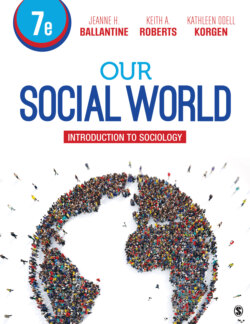Читать книгу Our Social World - Kathleen Odell Korgen - Страница 151
Descriptions of Images and Figures
ОглавлениеBack to Figure
A time line from 1700 till 1900 shows the different inventions with their illustrations that caused industrial revolution. They are as follows:
1712: Thomas Newcomen patents the atmospheric steam engine.
1733: John Kay invents the flying shuttle
1764: James Hargreaves invents the spinning jenny.
1779: Samuel Crompton invents the spinning mule.
1793: Eli Whitney patents the cotton gin.
1807: Robert Fulton begins steamboat service on the Hudson River.
1830: George Stephenson begins passenger rail service between Liverpool and London.
1837: Samuel Morse invents the telegraph.
1866: Cyrus Field lays the first successful transatlantic cable.
1876: Alexander Graham Bell invents the telephone.
1879: Thomas Edison invents the incandescent lightbulb.
1892: Rudolf Diesel invents the diesel-fueled internal combustion engine.
1896: Henry Ford manufactures his first motorcar.
1900: The zeppelin invented by Count Ferdinand von Zeppelin.
1903: The Wright Brothers make the first successful airplane flight.
Back to Figure
A line graph illustrates the global perception of U.S. power and influence from 2013 till 2017. There is a question that says, “U.S. power and influence is a blank to our country.”, with the options major threat, minor threat, and not a threat. The line from 2013 to 2017
Major threat: 25 percent in 2013, and 38 percent in 2017.
Minor threat: 30 percent in 2013, and 24 percent in 2017.
Not a threat: 35 percent in 2013, and 23 percent in 2017.
Back to Figure
The list of the most spoken languages in the world is as follows:
Chinese: 1,284 million.
Spanish: 437 million.
English: 372 million.
Arabic: 295 million.
Hindi: 260 million.
Bengali: 242 million.
Portuguese: 219 million.
Russian: 154 million.
Japanese: 128 million.
Lahnda: 119 million.
Back to Figure
An illustration shows a large circle named, “National culture”. Within it are many small circles named, “subculture”, and even smaller circles named, “microculture”. A large and a small explosion shaped outline interrupts the national culture circle and is named as, “Counter cultures, opposition”.
